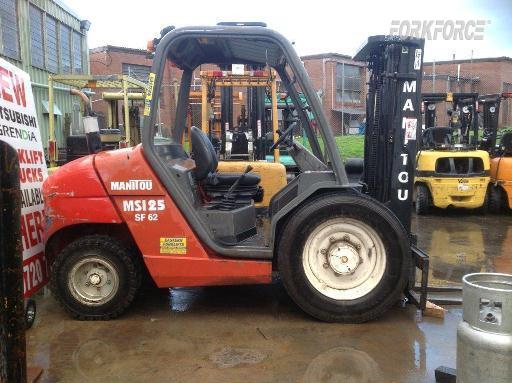
Rough Terrain Forklifts, whether it’s newly manufactured or a used rough terrain forklift for sale, are designed to be controlled in much more dangerous conditions than your standard forklift. As such, special precautions must be taken when operating it. This article will provide you with step-by-step instructions on how to operate a rough terrain forklift safely.
Also, if you’re looking for a used rough terrain forklift for sale near you, don’t hesitate to contact us today, and we’ll get you the second-hand rough terrain forklift you need. We have service centres in Sydney, Melbourne, Brisbane, Adelaide and Perth.
Rough terrain forklifts can work well in many settings, which is why we specialise in supplying heavy equipment to remote areas where moving supplies or equipment is difficult without using vehicles like rotary steerable systems (for example). Rough terrain forklifts are highly manoeuvrable and can get through almost any type of landscape efficiently without making trails. They also handle large amounts of weight at once, which makes them perfect for mining, construction, farming and forestry operations.
However, it is important to note that the operations of a rough terrain forklift are different from traditional forklifts with regards to speed and power. As they have minimal ground clearance and very tight turning radiuses, you cannot simply move at high rates of speed or turn quickly with a rough terrain forklift.
They tend to be more stable at very slow speeds as well. This is due to their six-wheel drive for pulling themselves up steep inclines from 3° slopes from the rear wheels all the way up 45° slopes from the front wheels. This means operators must take care when operating them on certain types of surfaces such as ice or rocky ground if there is potential for loss of traction.
If you’re looking for rough terrain forklifts or similar equipment, we have a wide selection of forklifts and access equipment.
1. Check your load. Make sure the vehicle is loaded evenly. Do not overload it! The weight should be distributed so that no more than 40% of the total capacity is on the front axle and no more than 20% on either rear axle. If possible, use some sort of restraint to keep items in place while being transported. For example, nets are preferable to straps because they do not put any stress at all on your machinery.
2. Start the engine. Be sure to follow all safety procedures regarding this step. Make sure there are no people nearby before cranking up your forklift. If you cannot see well enough to check for yourself, ask someone else to check it out for you. As soon as you start the engine, be sure that it is switched into gear (the “P” position on the P-handle). The brakes will hold onto objects even when in neutral, but if an object slips or shifts suddenly while being transported, it could tip your lift over!
Also note that sometimes it takes a minute or two for the engine to warm up enough before the hydraulics will work properly so readjust your wait time accordingly.
3. Drive to your load. While driving, watch out for any pedestrians or other forklifts. Remember that you are operating this vehicle in a potentially dangerous environment so take all precautions necessary not to harm anyone! If you feel threatened, immediately stop your forklift and call security or the authorities.
4. Position the forks under the load. Once you reach your load, position your forks underneath it as far as they will go without hitting the ground. Use the available hydraulics on your machinery to tilt the forks backward slightly if needed. This may be required for certain types of loads with very flat surfaces, such as pallets.
5. Lower the load onto its destination. Slowly lower the lift by using both hands on top of one another to squeeze the hydraulic levers on the “L” handle. This will slowly release pressure to lower your load onto its intended destination.
6. Unload your vehicle. Once you’ve reached your destination, use the controls to tilt the forks downward to their original position. Remove them from underneath the load carefully and slowly so as not to harm anyone or anything beneath it. Then drive away without any obstructions in front of you, such as other vehicles.
7. Complete post-operation check-up. After unloading, complete a short pre-operational checklist just like with any forklift before turning off the engine. Make sure no parts are damaged or broken and that nothing is loose or needs replacement before shutting down any machinery properly. If all components pass inspection, you’re ready to go!
There are many things you need to be aware of before using or operating any heavy machinery so make sure you pay attention and stay focused. If something looks complicated, take the time necessary to read through instructions thoroughly instead of just skimming over them, because it will all be worth it in the end. Make sure you are also prepared for unexpected events at all times to ensure the best outcome possible.
So, if you’re not that confident in operating a rough terrain forklift, feel free to contact us today. We provide professional forklift operators in our Hire Team to help you get the job done!
No matter what your specifications are, please contact one of our experienced sales staff who are happy to answer all your questions about rough terrain forklift sales and hire.
Rough Terrain Forklifts Copyright 2024 | Home | Disclaimer | Privacy Policy
All rights reserved. This site has been prepared by Forklift
Network Pty Ltd ABN 71 164 729 417